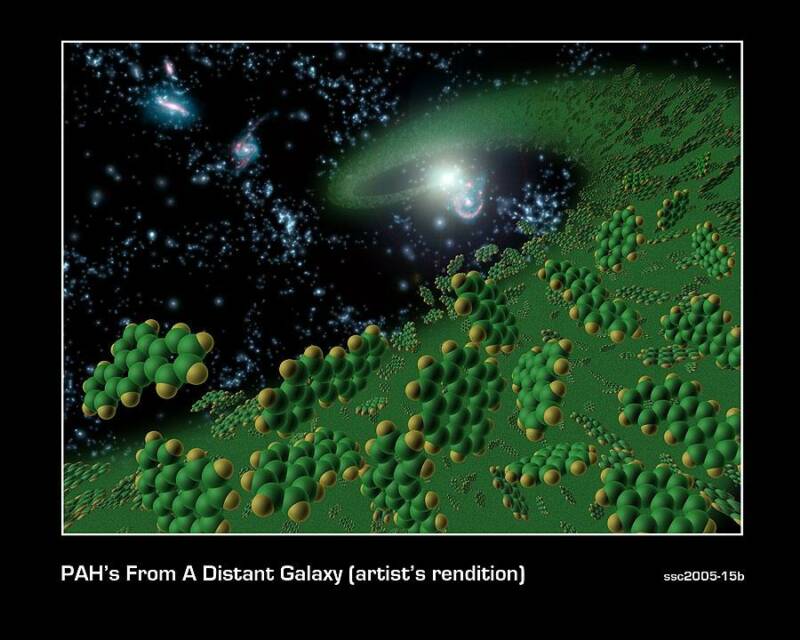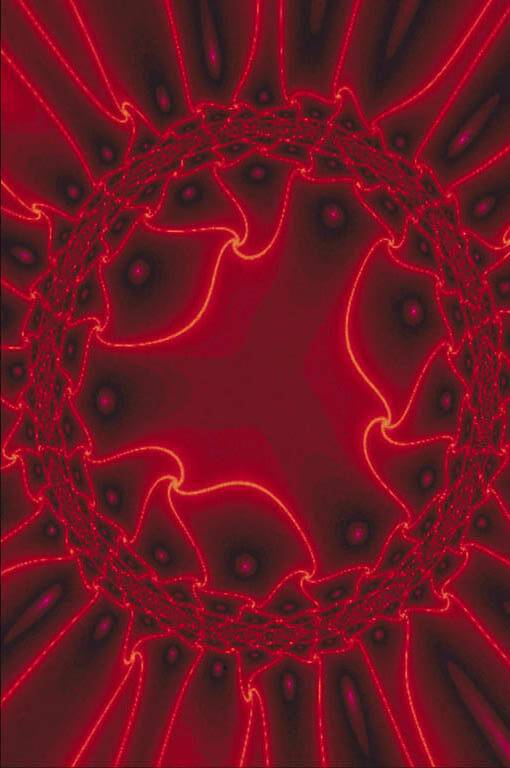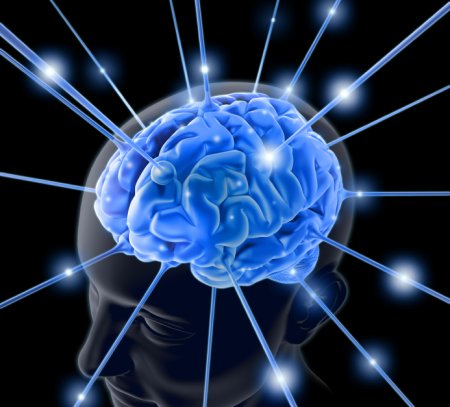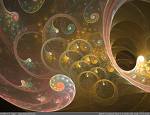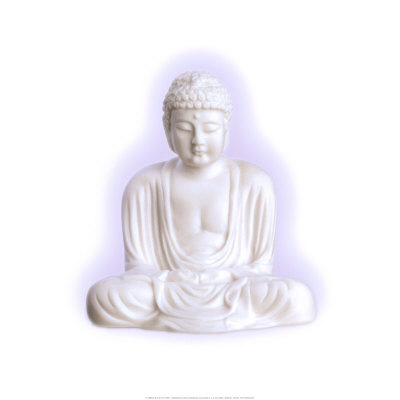
SOUL RESEARCH INSTITUTE
(866)-397-6939, 719-488-0548, 303-507-5169

SEARCH
The Phenomenon of Death
End of life is death. More precisely, it is the end of one life-span or the end of one single span of existence.
Technically, death can be defined as the conclusion or the end of materiallife faculty (see link to your left to learn about life faculty). The life faculty ends, when, either the body breaks down naturally due to decay or when its karmic fuel supply is cut-off or exhausted. So, death is firstly a material phenomenon and secondly also a material phenomenon!
There is really no such thing as ‘mental death’ except in case of the enlightened master achieving Nirvana. Even then, mental death is not truly a death, but more like a deathless death. Understand that mind-consciousness is not a ‘thing.’ So, it really does not die per say. In case of enlightenment or Nirvana, due to exhaustion of karmic fuel, what dies is the ego.
Most common death occurs due to the natural decay of the body. Death occurs when the body no longer provides support for the arising of sense-consciousness and mind-consciousness. What that generally means is, when the body is no longer physically capable of fulfilling the karmic sensual desires of seeing, hearing, smelling, tasting, touching and knowing or cognizing, death occurs. When the karmic sensual desires do not have the means for manifestation, or, when the karmic fuel does not have the means to burn itself, death occurs.
Uncommon death occurs due to accidental or intentional cutting off of life faculty. Examples of such death are: Homicide, suicide, fatal accidents, disaster related deaths, epidemic related death, etc. Uncommon death generally occurs when the karmic fuel supply is suddenly cut-off due to irreversible damage to the subtle heart-matter (mind-base) which provides physical support for the mental/karmic activity.
Think of a light bulb. Let us say, it is alive when light is on and dead when light is off. So, the death of a light bulb can occur when the bulb coil breaks down, or when it is turned off externally by switching it off, or when it is physically broken down by someone, or when the electric supply is exhausted. In this example, the light bulb represents physical body, the coil represents life faculty, the socket for electric supply represents the mind-base, and the electric supply itself represents karma and its concomitants (the karmic fuel). Wearing of the bulb and break-down of the coil is like a natural common death. Switching off the electric supply or breaking the bulb intentionally is like an uncommon or accidental death. Exhaustion of electric supply is like the Nirvana.
See Slide.
It is generally ‘fate’ that determines the life-span (or death). That is why an accident causing death is called a fatal accident. This fate is nothing but the end-result of variety of karmas such as the productive, supportive, obstructive, and destructive karmas. The karmas which ripen in the same existence in which they are performed are the ones that mostly contribute to the phenomenon of fate that determines the life-span or the death.
There is no such thing as an absolutely fixed life-span. Fate or life-span depends upon the productivity, supportivity, obstructivity, destructivity, effectivity, ripening potential, and the place of ripening of karmas. A productive karma such as ‘healthy eating’ and a supportive karma such as ‘regular exercising’ extend the life-span. On the other hand, an obstructive karma of ‘smoking and intoxicating’ will obstruct the effects of productive and supportive karmas and will not allow their effects to take place. A destructive karma such as ‘violent anger or rage’ will not only prevent the ripening of productive karmas but also force its own ripening thereby drastically shortening the life-span. Thus, fate is neither a fixed entity nor a coincidence or a fluke. Fate is a karmic phenomenon, and it is closely related to death.
As I said earlier, karmas that most effectively contribute to the phenomenon of life-span are the ones which ripen in the same existence in which they are performed. Effective karma that extends (produces or supports) life-span is generally wholesome in nature. Examples: Hygienic living, Healthy eating, exercising, sexual moderation, living a stress-free and balanced lifestyle, interacting with nature, etc. Effective karma that shortens (obstructs and destructs) the life-span is generally unwholesome in nature. Examples: Unhygienic living, unhealthy eating, overeating, worrying, over-enthusiasm, fast-pace lifestyle, too much entertainment, over-consumption of everything, arguing, competing, anger, etc.
K A R M A
What Happens Just Before Death
Even though it is important to understand what happens just before death, at the moment of death, and immediately after death, it is not advisable to dwell into it unless one thoroughly understands the cognitive processes that we discussed in the consciousness section. So, please try to study, contemplate, and thoroughly understand the cognitive process before going further (see link to your left).
Assuming that you have developed clear comprehension of the cognitive process, I will now explain the near-death phenomena.
When death is imminent, a mental object will present itself to the last cognitive process that occurs just before the moment of death. This object is the result of stored-up karma and the conditions present at the time of death. This object can be of various kinds. It can be a wholesome or unwholesome volitional formation resulting from extraordinary deeds performed during the entire life-span, or a ‘mark of karma’ resulting from habitual karmas, or a ‘death-proximate karma’ resulting from deeds performed immediately before death, or a ‘mark of destiny.’
When an extraordinary karma (wholesome or unwholesome volitional formation) arises at the time of death, it has so much power that it cannot be replaced by any other karma determining the new birth. Its ethical or qualitative weight is so tremendous that it creates definite conditions for rebirth in accordance with its ethical quality. For example, if a murder is committed during lifetime, then, no matter what else is done during the lifetime as repentance, the fruit of the murder is the powerful unwholesome volitional formation (karma) which arises at the time of death resulting in the painful death and woeful rebirth. If, on the other hand, meditative absorptions are attained during the lifetime, then, the powerful wholesome volitional formation (karma) arises at the time of death resulting in the peaceful death and heavenly rebirth. Just as murder has supreme power to generate painful death and woeful rebirth, meditative absorptions have supreme power to generate peaceful death and heavenly rebirth.
If there are no extraordinary karmas present in a life-span, then, some karma or a ‘mark of karma’ representing an overall ethical or habitual quality of lifetime arises at the time of death. Mark of karma is like an image or indication of what will happen in the next life-span. For example, an experienced chef may see an image of knife or an oven, a religious person may see an image of a temple or a church, an experienced car mechanic may see an image of a jacked-up car.
If there are no powerful karmas or no habitual or qualitative karmas, then a death-proximate karma may arise at the time of death. This type of karma arises as a remembrance of good or bad deeds performed during the life time or it arises as a result of good or bad deeds performed just before the death. For example, if meditation, spiritual studies, religious recitals and pious rituals are done just before death, then a painless death and fortunate rebirth may happen. If, on the other hand, activities such as property wills, distribution of wealth, craving the presence of son or daughter or any family member or a friend, worrying, crying or repenting, etc are done just before death, then a painful death and an unfortunate rebirth may happen. This does not mean that all the wholesome deeds go waste because there was craving at the time of death. It does not mean that all the unwholesome deeds are washed away because religious recitals and pious rituals are performed just before death. All the deeds eventually bear fruits even if it is the next life-span.
If none of the above karmas (extraordinary karmas, habitual karmas, death-proximate karma) arise at the time of death, then, a ‘mark of destiny’ may arise at the time of death. Mark of destiny is like an image or indication of where the existence will be in the next life-span. For example, a deluded and lazy person may see forests or woods indicating that the next life-span might be spent in the animal world. A materially ambitious, hard-working, and greedy person may see wealthy objects such as mansions, expensive cars, etc. A murderer or a violent person may see infernal fires indicating that the next life-span might be spent in hell. A virtuous, meditative person may see heavenly light or celestial beauty indicating that the next life-span might be spent in heavens.
So, when an object (extraordinary karma, habitual karma or mark of karma, death-proximate karma, mark of destiny) presents itself to the last cognitive process that occurs just before the moment of death, the subconsciousness vibrates for a moment as it takes on this object and then it is arrested. Subsequently, as discussed under cognitive process (see link to your left) sense-enabling consciousness, sense-consciousness, receiving-consciousness, investigating-consciousness, and determining-consciousness arise and pass away leading to the volitional/karmic stage of the cognitive process.
At the moment of death, the volitional/karmic stage is so weak that there is no new volitional action. So, it simply takes on the mental object (extraordinary karma, habitual karma or mark of karma, death-proximate karma, mark of destiny) that has been presented to the cognitive process. Consequently, a registering consciousness may or may not arise, but a death-consciousness arises as a manifestation of the subconsciousness. The arising and passing of this death-consciousness is the actual time of death. This death consciousness performs the function of terminating the life faculty. Once the life faculty is terminated, body becomes an inanimate object of matter. The dead body is just like any other inanimate object which is sustained by the phenomenon of temperature until it reduces to ashes or dirt either due to decay or due to burning.
See Slide.
Is ‘death’ a conscious phenomenon?
Yes and No. Yes; because, as I said earlier, death is primarily and secondarily a material phenomenon, and not a metal phenomenon. I mean, there is no such thing as mental death.
No; because, death-consciousness is really not a consciousness per say, but, it is a manifestation of subconsciousness. It is important to note that there is no new volitional activity during the last cognitive process which precedes death. That is why, subconsciousness arises as death consciousness. So, death is a ‘sub-’conscious phenomenon and not an entirely conscious phenomenon.
What is the implication of death being a subconscious phenomenon?
The implication is that, there is no way to make a choice about what we want to be in the next life-span. There is no way to make a ‘will’ about what we want in the next life-span. At the time of death, we cannot willfully or intentionally arise a sensual desire of becoming a handsome man or beautiful woman or rich or famous, thinking that the last desire would pass on to the next life-span. We cannot think ‘CEO’ at the moment of death and expect that you will become a CEO of some company in the next life-span.
What happens at the moment of death depends upon what we ‘did’ in our entire life and even before that. What happens after death depends upon what ‘happened’ at the moment of death and what happened in the life-spans before that.
Copyright 2008 SOUL Research Institute
C
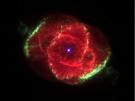
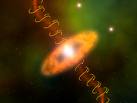



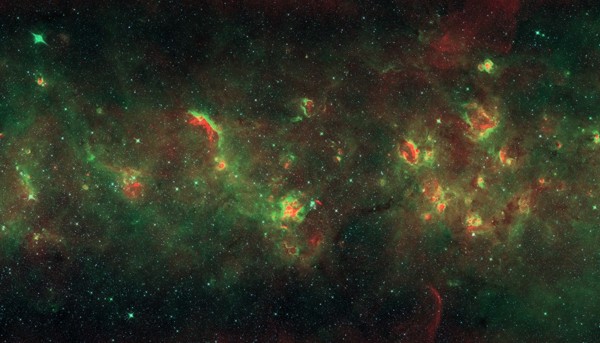
..............BIRTH.death.REBIRTH...........
What Happens Immediately After Death?
(The Phenomenon of Rebirth)
Immediately after death-consciousness has passed away, subconsciousness manifests as rebirth-linking consciousness taking on the same object that was carried by the death- consciousness. It is called a linking-consciousness because it links previous life span with the new life-span by carrying the object of the last cognitive process of preceding existence.
At the moment of conception, the rebirth-linking consciousness arises in the womb of creation. It needs the support of subtle-heart matter (mind-base) for arising, which, it finds in the conception occurring in the womb. This is how the next existence begins. The moment of conception is the actual moment of rebirth or simply birth.
It is important to understand that, even though death-consciousness and rebirth-linking-consciousness are both manifestations of subconsciousness, they are distinct. They are like the two sides of the same coin or like the two sides of the same door. When we ‘exit’ from one side, we ‘enter’ the other side. One cannot occur without the other. At the same time, one is distinct from the other.
The rebirth-linking consciousness only performs the function of apprehending the object of the last cognitive process of the previous existence. It is always followed by the subconsciousness of the next life-span.
With the arising of subconsciousness, the first cognitive process of the new life-span begins. The subconsciousness vibrates for a few moments as it takes on the object apprehended by rebirth-linking consciousness, and then it is arrested. Subsequently, as discussed earlier, sense-enabling consciousness, sense-consciousness, receiving-consciousness, investigating-consciousness, and determining-consciousness arise and pass away leading to the first volitional/karmic stage of the first cognitive process in the new life-span. This is the stage when the ‘first’ feeling occurs resulting in clinging - craving - attachment to the new existence. Consequently, a registering consciousness may or may not arise, but the subconsciousness arises and ceases again until the next (second) cognition process begins. This way, the new existence continues uninterruptedly with subconsciousness filling the gaps between cognitive processes.
See Slide.
With the presence of karma, consciousness, and the support of warmth and nutrition in the womb, the process of ‘becoming’ continues inside the physical mother’s womb until a baby is born. The moment of physical birth is the moment of separation between the baby and physical mother’s womb. This moment is commonly known as the ‘time of birth,’ which, in reality, is simply the time of physical separation between the mother and the baby. This time of birth has its own significance.
The process of ‘becoming’ continues outside the physical mother’s womb. The outside is none other than mother-nature’s womb because it also provides necessary support of nutrition and warmth for the generation of matter (growth). Remember that, for the generation of organic matter (or the four essential elements of earth, water, fire, and air), four entities are always required: Consciousness, karma (mind), nutrition, and temperature.
From one birth to the next, the process of ‘becoming’ continues in accordance with the law of creation and the fixed order of the cognitive process. The birth begins with the arising of rebirth-linking-consciousness and death occurs with the arising of death-consciousness, which, in turn, is followed by rebirth-linking consciousness. In this way, the wheel of becoming or the round of birth and death continues for eons of time.
See Slide (Law of Creation).
But, why rebirth-linking-consciousness has to arise in the first place?
According to the law of creation, the rebirth-linking-consciousness is generated because of the presence of volitional formation (karma) and latent roots of ignorance and greed. The volitional formation is none other than the object of the last cognitive process of preceding existence. If there is no volitional formation (karma or sensual desire), the rebirth-linking- consciousness does not arise. This is what happens in case of the death of an enlightened master attaining nirvana.
What are these latent roots of ignorance and greed?
Latent roots of ignorance (delusion) and greed are none other than ‘ego.’ Or, we can say that ignorance and greed are the parents of ‘ego.’ Technically, we can say that ‘ego’ is the manifestation of the phenomena of ignorance and greed.
What is the source of subconsciousness? Where does it come from and why it arises whenever there is no cognitive process such as during the moments of death and re-birth?
"The Subconscious"
The Undercurrent of Death and Rebirth
I just said that the rebirth-linking-consciousness is generated because of the presence of volitional formation (karma) and latent roots of ignorance and greed. In simple words, rebirth occurs because the seed of consciousness shoots out new existence in the field of karma, which is fertile because of ignorance and greed. It is just like a tree-life arising out of a seed planted in the fertile soil-field. The tree-life is like the new existence, seed is like the consciousness, soil-field is like karma/stored-up karma/accumulated karma, and fertility is like the ego (ignorance and greed).
While talking about the cognitive process, I also said that rebirth-linking-consciousness is a particular manifestation of subconsciousness. If rebirth-linking-consciousness (or consciousness) is a seed, then subconsciousness is the latent/dormant/hidden/underlying potential present in that seed. This potential is none other than the stored-up or accumulated karma which is dormant but functional, and waiting to gain the status of full consciousness. The stored-up or accumulated karma does not belong to any individual but to the entire world of creation. It has been formed and forming since the beginningless beginning and will continue forming and manifesting until endless end. Thus karma and consciousness, in general, form an endless loop without a beginning.
Subconsciousness is thus the ‘potentiality’ principle behind all creation or existence. It is also the ‘foundational’ and ‘conditional’ principal because it serves as an undercurrent of creation, and because it is a reason for creation. It is therefore always present in a dormant or ‘sub’ state and arises as full consciousness whenever there is no cognitive process taking place.
In the beginning, we should simply understand subconsciousness as a ‘gap’ between thoughts, as memory, as intuitional faculty, as a storehouse of all powers, etc. We can also understand subconsciousness as what makes the heart beat, makes the cells to grow and multiply, makes all the ‘unintentional’ mental and physical phenomena to occur.
Whatever happens in your body and mind without your knowledge or intention, is happening because of the subconsciousness. All the ‘autonomous’ physical and mental phenomena occur due to subconsciousness. However, we should not make an entity out of it. We should not make a ‘thing’ out of it. We should not call it a person’s ‘individual soul’ or something like that. We need to remember that subconsciousness is a phenomenon because it is also constantly in flux and changing. It is really not much different from the phenomena of consciousness, karma, or mind. Subconsciousness is basically a karma-resultant state of consciousness. It is like the ‘karma-field’ we talked about earlier. So, we must not try to find some ‘origin-ness’ or ‘ultimate-ness’ in it.
You can say that subconsciousness is a field of ‘dormant’ consciousness and this field is permeated by the force of karma just as the gravitational field is permeated by the gravitational force. Anything that comes in contact with the gravitational field experiences the gravitational force. Likewise, when the consciousness comes in contact with the karmic field, it experiences the karmic force. It is this karmic force which makes the dormant consciousness ‘conscious.’
There is no gravity without the gravitational field and there is no gravitational field without the gravity. They are inseparable. Similarly, there is no karma without consciousness and there is no consciousness without karma. There is no experience without the force and there is no force without the experience.
Thus, karma-field is also a field of subconsciousness (or consciousness). They are all fundamentally the same thing: The mind-stuff or immateriality. When we say karma or consciousness or subconsciousness, we are simply talking about the same thing in different ways for the purpose of thoroughly understanding the phenomenon of existence.
